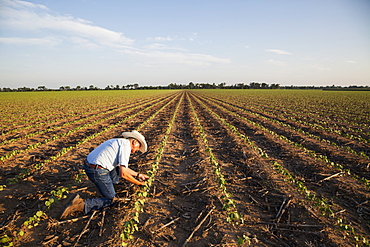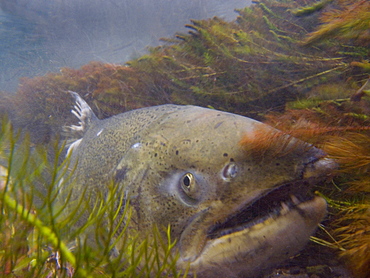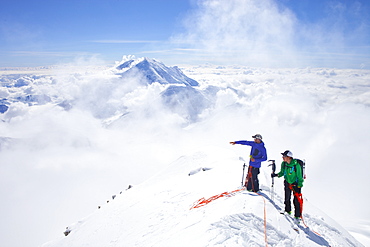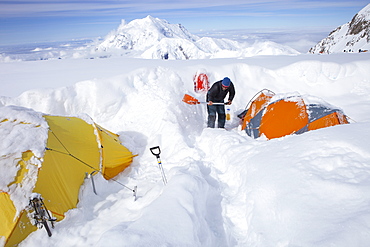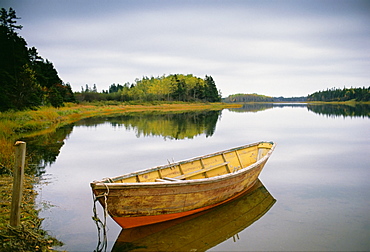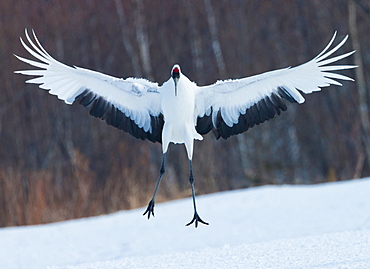Recent searches
Loading...
857-94779 - A helicopter overview of Sunset Beach during Condition Black. (Condition Black is extremely rare and nobody is allowed to enter the ocean during this time).
1167-1647 - Heavy ice near face of South Sawyer Glacier, misty conditions, mountain backdrop, Tracy Arm Fjord, Alaska, United States of America, North America
1167-1648 - Spectacular iceberg, with stunning blue cube, Tracy Arm Fjord, misty conditions, near South Sawyer Glacier, Alaska, United States of America, North America
746-88145 - The medieval astronomic clock, the only one of its kind in good working condition. Church Marienkirche, a landmark of Rostock. The hanseatic city of Rostock . Europe,Germany, Mecklenburg-Western Pomerania, June
746-88233 - The Highland of Iceland close to the ring road during winter in stormy and sunny weather conditions. europe, northern europe, iceland, February
746-88144 - The medieval astronomic clock, the only one of its kind in good working condition. Church Marienkirche, a landmark of Rostock. The hanseatic city of Rostock . Europe,Germany, Mecklenburg-Western Pomerania, June
746-88234 - The Highland of Iceland close to the ring road during winter in stormy and sunny weather conditions. europe, northern europe, iceland, February
1174-4421 - A ship sailing in the North Sea in foggy, rough conditions.
799-3572 - Sailing boat in misty conditions at dawn on Wimbleball Lake, Exmoor National Park, Somerset, England, United Kingdom, Europe
799-3551 - Stormy winter conditions at high tide, Trebarwith Strand, Cornwall, England, United Kingdom, Europe
799-3507 - Moody overcast conditions at Trebarwith Strand in North Cornwall, England, United Kingdom, Europe
857-93736 - A Lone Ski Patroller Sitting On A Ski Lift In White Out Conditions At Arapahoe Basin Ski Resort
1116-39472 - Crop consultant checking plants and conditions of farmland, no till cotton at the seedling stage where corn was previous crop, England, Arkansas, United States of America
799-3401 - Misty conditions beside Herbert Lake in the Canadian Rockies, Banff Natonal Park, UNESCO World Heritage Site, Alberta, Canada, North America
1219-54 - Groups of skiers enjoying the winter conditions with the village of Obergurgl and Otztal Alps beyond, Tyrol, Austria, Europe
1212-230 - Dangerous driving conditions in the snow, United Kingdom, Europe
1212-155 - Bad driving conditions in the rain by the Ribblehead Viaduct, Lancashire, England, United Kingdom, Europe
911-10866 - Foulshaw nature reserve, a lowland raised bog in South Cumbria, UK, planted by the forestry commission, years ago, it is now being restored to its former condition.
911-10865 - Foulshaw nature reserve, a lowland raised bog in South Cumbria, UK, planted by the forestry commission, years ago, it is now being restored to its former condition.
911-10867 - Foulshaw nature reserve, a lowland raised bog in South Cumbria, UK, planted by the forestry commission, years ago, it is now being restored to its former condition.
842-475 - Stormy conditions at Grasmere in the Lake District National Park, Cumbria, England, United Kingdom, Europe
857-91073 - November 7, 2008 Mt Shasta CA A spawned-out Chinook salmon watches over her redd in the Shasta River where it runs through Big Springs Ranch about 2 miles north of the town of Mt Shasta. The ranch, which is contributing to degraded habitat conditions, which actually warm water tempt by upwards of 10 degrees as the river passes through the ranch and then spills into the Klameth, is currently under contract for purchase by TNC, therefor TNC and partner organizations have been allowed to research this stretch of river for the first time. They have discovered that is it a very fertile juvenile rearing area and that there are a surprising number of returning salmon in spite of habitat degraded by grazing cattle (often in the river) and irrigation practices. If this purchase is successful, TNC has the chance to improve a large stretch of habitat and quickly improve conditions that will effect numbers of returning fish and habitat in the Shasta and Klameth Rivers. In California, The Nature Conservancy is focusing its efforts on protecting the Shasta River and its tributaries, which create one of the most important spawning nurseries for Chinook salmon in the entire Klamath Basin, United States of America
857-91078 - November 12, 2008 Mt Shasta and the Shasta River, Big Springs ranch, CA Carson Jeffres Staff Research Associate for UC Davis Center for watershed Sciences, conducting research in the Shasta River where it runs through Big Springs Ranch about 20 miles north of the town of Mt Shasta. The Shasta River and its tributaries create one of the most important spawning nurseries for Chinook salmon in the entire Klamath Basin. The ranch is contributing to degraded habitat conditions, which actually warm water temps by upwards of 10 degrees as the river passes through the ranch and then spills into the Klameth River.This stretch of river is a very fertile juvenile salmon rearing area and that there are a surprising number of returning salmon in spite of habitat degraded by grazing cattle and bad irrigation practices, United States of America
857-91077 - November 12, 2008 Mt Shasta CA, Big Springs ranch Carson Jeffres (rt) Staff Research Associate for UC Davis Center for watershed Sciences, and Andrew Nichols, Jr Specialist (UC Davis Center for watershed Sciences,) conducting research in the Shasta River where it runs through Big Springs Ranch about 20 miles north of the town of Mt Shasta. The ranch, which is contributing to degraded habitat conditions that warm water temps by upwards of 10 degrees as the river passes through the ranch and then spills into the Klameth, is currently under contract for purchase by TNC, therefor TNC and partner organizations have been allowed to research this stretch of river for the first time. They have discovered that is it a very fertile juvenile rearing area and that there are a surprising number of returning salmon in spite of habitat degrated by grazing cattle (often in the river) and irrigation practices. If this purchase is sucessful, TNC has the chance to improve a large stretch of habitiat and qucikly improve conditions that will effect numbers of returning fish and habitiat in the Shasta and Klameth Rivers. The Shasta River and its tributaries create one of the most important spawning nurseries for Chinook salmon in the entire Klamath Basin, United States of America
857-91080 - November 12, 2008 Mt Shasta CA, Big Springs ranch The Shasta River as it runs through Big Springs Ranch about 20 miles north of the town of Mt Shasta. The Shasta River and its tributaries create one of the most important spawning nurseries for Chinook salmon in the entire Klamath Basin. The ranch is contributing to degraded habitat conditions, which actually warm water temps by upwards of 10 degrees as the river passes through the ranch and then spills into the Klameth River.This stretch of river is a very fertile juvenile salmon rearing area and that there are a surprising number of returning salmon in spite of habitat degraded by grazing cattle and bad irrigation practices, United States of America
857-91084 - Mt Shasta CA, Big Spring Ranch Bill Chesney from the CA Dept of Fish & Game counting redds in a stretch of river that is heavily grazed by cattle who have full access to the river and often drink and eat in it. Mt Shasta in the background. The Shasta River runs through Big Springs Ranch about 20 miles north of the town of Mt Shasta. The ranch, which is contributing to degraded habitat conditions, and actually warming water temps by upwards of 10 degrees as the river passes through the ranch and then spills into the Klameth, is currently under contract for purchase by TNC. Since the contract began, TNC and partner organizations have been allowed to research this stretch of river for the first time. They have discovered that is it a very fertile juvenile rearing area and that there are a surprising number of returning salmon in spite of habitat degradation by grazing cattle (often in the river) and irrigation practices. If this purchase is successful, TNC has the chance to improve a large stretch of habitat and quickly improve conditions that will effect numbers of returning fish and habitat in the Shasta and Klameth Rivers. The Shasta River and its tributaries create one of the most important spawning nurseries for Chinook salmon in the entire Klamath Basin, United States of America
857-91074 - November 7, 2008 Mt Shasta CA A spawned-out Chinook salmon watches over her redd in the Shasta River where it runs through Big Springs Ranch about 2 miles north of the town of Mt Shasta. The ranch, which is contributing to degraded habitat conditions, which actually warm water tempt by upwards of 10 degrees as the river passes through the ranch and then spills into the Klameth, is currently under contract for purchase by TNC, therefor TNC and partner organizations have been allowed to research this stretch of river for the first time. They have discovered that is it a very fertile juvenile rearing area and that there are a surprising number of returning salmon in spite of habitat degraded by grazing cattle (often in the river) and irrigation practices. If this purchase is successful, TNC has the chance to improve a large stretch of habitat and quickly improve conditions that will effect numbers of returning fish and habitat in the Shasta and Klameth Rivers. In California, The Nature Conservancy is focusing its efforts on protecting the Shasta River and its tributaries, which create one of the most important spawning nurseries for Chinook salmon in the entire Klamath Basin, United States of America
799-2954 - Stormy conditions at Kimmeridge Bay on the Jurassic Coast, UNESCO World Heritage Site, Dorset, England, United Kingdom, Europe
799-2952 - Wintry conditions at Gasadalur on the island of Vagar, Faroe Islands, Denmark, Europe
857-88779 - Mountain ranger Brian Scheele on this way to Windy Corner on Mount McKinley, also know as Denali, in Alaska. He is pulling a sled, that together with his heavy backpack is containing all the gear like tents, clothing and food. Every climbing season High Mountain Rangers of the Denali National Park Service are called to help climbers in need. If possible the patient is brought down to Basecamp on foot, only in life threatening conditions a helicopter is called to evacuate the patient to a hospital in Anchorage. Mount McKinley, native name Denali, is the highest mountain peak in North America, with a summit elevation of 20,321 feet (6,194 m) above sea level. At some 18,000 feet (5,500 m), the base-to-peak rise is considered the largest of any mountain situated entirely above sea level. Measured by topographic prominence, it is the third most prominent peak after Mount Everest and Aconcagua. Located in the Alaska Range in the interior of the U.S. state of Alaska, McKinley is the centerpiece of Denali National Park and Preserve.
857-88775 - High Mountain Rangers Tom Ditola and David Weber are taking a rest on the West Rib on Mount McKinley, Alaska. Mount Hunter in the background. They are above the clouds in blue sky and the sun is shining. Mount McKinley, native name Denali, is the highest mountain peak in North America, with a summit elevation of 20,321 feet (6,194 m) above sea level. At some 18,000 feet (5,500 m), the base-to-peak rise is considered the largest of any mountain situated entirely above sea level. Measured by topographic prominence, it is the third most prominent peak after Mount Everest and Aconcagua. Located in the Alaska Range in the interior of the U.S. state of Alaska, McKinley is the centerpiece of Denali National Park and Preserve. Every climbing season High Mountain Rangers of the Denali National Park Service are called to help climbers in need. If possible the patient is brought down to base camp on foot, only in life threatening conditions a helicopter is called to evacuate the patient to a hospital in Anchorage.
857-88773 - A mountain ranger is digging out tents after a snowstorm covered them during the night in 14k camp on Mount McKinley, Alaska. Climbers are advised to spare no expense on a expedition-quality tent as it can mean the difference between life and death during a ferocious storm on Denali. Extra poles and repair materials are important in case of damage caused by storms. Plan to take extra pickets, wands or deadmen for tent anchors. Never leave a tent without anchoring it securely. Tents are lost each year due to sudden gusts of wind while the tent was left unattended or drying. Every climbing season High Mountain Rangers of the Denali National Park Service are called to help climbers in need. If possible the patient is brought down to base camp on foot, only in life threatening conditions a helicopter is called to evacuate the patient to a hospital in Anchorage.
857-88636 - Two climbers dig out their tent after a snowstorm covered them in 14k camp on Mount McKinley, Alaska. Climbers are advised to spare no expense on a expedition-quality tent as it can mean the difference between life and death during a ferocious storm on Denali. Extra poles and repair materials are important in case of damage caused by storms. Plan to take extra pickets, wands or deadmen for tent anchors. Never leave a tent without anchoring it securely. Tents are lost each year due to sudden gusts of wind while the tent was left unattended or drying. Every climbing season High Mountain Rangers of the Denali National Park Service are called to help climbers in need. If possible the patient is brought down to base camp on foot, only in life threatening conditions a helicopter is called to evacuate the patient to a hospital in Anchorage.
799-2907 - Frosty winter conditions at the old clapper bridge at Postbridge, Dartmoor, Devon, England, United Kingdom, Europe
911-10618 - Walkers on Helvellyn summit in winter conditions, Lake District, UK.
911-10617 - Walkers on the Helvellyn Range in winter conditions, Lake District, UK.
911-10610 - Great Gable from Red Screes in the Lake District, Cumbria, UK, with valley cloud caused by a temperature inversion.
911-10611 - Helvellyn from Red Screes in the Lake District, Cumbria, UK, with valley cloud caused by a temperature inversion.
911-10161 - Spray in windy conditions from breaking waves, looking towards Dunstanburgh Castle, Northumberland, UK.
832-376956 - Parish fair in the evening in Ribnitz at the Saaler Bodden. Roundabouts with ferris wheel, federation, Karussels, visitors and lunch conditions.
832-376436 - Meersburg - the historical castle - Baden Wuerttemberg, Germany Europe.
832-376434 - Meersburg - the historical castle - Baden Wuerttemberg, Germany Europe.
832-376433 - Meersburg - the historical castle - Baden Wuerttemberg, Germany Europe.
832-376955 - Parish fair in the evening in Ribnitz at the Saaler Bodden. Roundabouts with ferris wheel, federation, Karussels, visitors and lunch conditions.
1174-2338 - A small group of people, a businesswoman and two businessmen outdoors in the city.
1174-2135 - Landscape of Little Cottonwood Canyon, with the Devil's Castle mountain peak, in the Wasatch mountain range. Wild flowers in tall grass, Wasatch Mountains, Utah, USA
1174-267 - A railroad extending through the desert, near Wendover in Utah, Umatilla County, Oregon, USA
1174-2275 - New York City. An observation deck overlooking the Empire State Building. A young couple looking through the telescope, New York city, USA
1174-2285 - Urban Lifestyle. A group of people, men and women on a city bus, in New York city. A couple side by side looking at a digital tablet, New York city, USA
1174-1616 - Whooper swans, Hokkaido, Japan, Hokkaido, Japan
1174-2272 - New York City. An observation deck overlooking the Empire State Building. A young man looking through a telescope over the city, New York city, USA
1174-1133 - Man with camera and tripod on the flat saltpan or playa of Black Rock desert, Nevada, Black Rock Desert, Nevada, USA
1174-1618 - Cygnus cygnus, Whooper swans, on a frozen lake in Hokkaido, Hokkaido, Japan
1174-529 - Close up of chewed bubble gum stuck on The Gum Wall in Pike Place market in Seattle.
1174-1585 - Life in a small Rajasthan village, India, Jaipur, Rajasthan, India
1174-1620 - Japanese cranes, Hokkaido, Japan, Hokkaido, Japan
1174-2139 - A small wooden dory or rowing boat moored on flat calm water, in Savage harbour on Prince Edward Island in Canada, Savage Harbor, Prince Edward Island, Canada
1174-2302 - A controlled forest burn, a deliberate fire set to create a healthier and more sustainable forest ecosystem. The prescribed burn of forest creates the right condition for regrowth, Whitman County, Washington, USA
1174-1105 - Boxes of organic raspberries on a farmers market stall, Seattle, Washington, USA
1174-1764 - Black sea nettle jellyfish underwater, in the Monterey Bay Aquarium, Monterey County, California, USA
1174-440 - Two people with baskets of tomatoes and curly green leafy vegetables. Working on an organic farm, Woodstock, New York, USA
1174-274 - Railroad tracks extending across the flat Utah desert landscape, at dusk, Tooele County, Utah, USA
1174-1622 - Japanese crane, Hokkaido, Japan, Hokkaido, Japan
1174-447 - Working on an organic farm. A woman holding a handful of fresh green vegetables, produce freshly picked, Woodstock, New York, USA
1174-1619 - Japanese crane, Hokkaido, Japan, Hokkaido, Japan
1174-1611 - Japanese cranes, Hokkaido, Japan, Hokkaido, Japan
1174-1009 - A canoe boat beached on the shore of a lake or river, USA
1174-334 - An organic farm in the Catskills. A pig, Saugerties, New York, USA
1174-2279 - New York City. An observation deck overlooking the Empire State Building. A woman using her smart phone to take a photograph of herself and the view over the city, New York city, USA
1174-2239 - A domestic kitchen. A woman preparing a meal, mixing flour and fat to create pastry, Provo, Utah, USA
1174-1045 - Three people, woman and children walking through woodland, Woodstock, New York, USA
1174-1613 - Cygnus cygnus, Whooper swans, on a frozen lake in Hokkaido, Hokkaido, Japan
1174-1757 - Steps on oil storage container, Taft, Kern County, California, USA
1174-484 - A young girl holding a large bunch of carrots.
1174-1945 - Organic kiwi slices, white background, Washington, USA
1174-2128 - A stack of old hard cover books, with worn edges and paper that is stained or yellowed with age and use.
1174-1677 - Lost in thought, a woman sits amidst a raft of boats. Ninh Binh, Vietnam, Ninh Binh, Vietnam
1174-1614 - Cygnus cygnus, Whooper swans, on a frozen lake in Hokkaido, Hokkaido, Japan
1174-1482 - A woman with a bucket feeding the sheep at an animal sanctuary. A small group of animals, Saugerties, New York, USA
1174-1073 - A man paddling a kayak on calm water in misty conditions. New York State, USA, New York state, USA
1174-446 - Working on an organic farm. A man holding a basket full of corn on the cob, vegetables freshly picked, Woodstock, New York, USA
1174-485 - A child inspecting freshly picked carrots with mud on them.
1174-2282 - Urban lifestyle. Two young men using their phones to take images of the city from an observation platform overlooking the Empire State Building, New York city, USA
1174-1621 - Japanese cranes, Hokkaido, Japan, Hokkaido, Japan
1174-1617 - Cygnus cygnus, Whooper swans, on a frozen lake in Hokkaido, Hokkaido, Japan
1174-1138 - Tyre marks and tracks in the playa salt pan surface of Black Rock Desert, Nevada, Black Rock Desert, Nevada, USA
1174-2276 - New York City. An observation deck overlooking the Empire State Building. A young couple looking through the telescope, New York city, USA
1174-1763 - Black sea nettle jellyfish underwater, in the Monterey Bay Aquarium, Monterey County, California, USA
1174-1612 - Cygnus cygnus, Whooper swans, on a frozen lake in Hokkaido, Hokkaido, Japan
1174-1853 - Ice crystals, Washington, Washington, USA
1174-1765 - Row of clear, plastic water bottles filled with filtered water in a row, on a black background, Washington, USA
1174-968 - Sticks of fresh rhubarb with long pink stems, and cut leaves, Maryland, USA
1174-445 - Working on an organic farm. A man holding a basket full of corn on the cob, vegetables freshly picked, Woodstock, New York, USA












